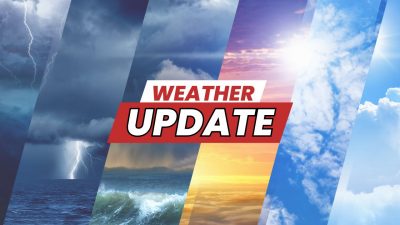MANILA — The Philippine Atmospheric, Geophysical, and Astronomical Services Administration (PAGASA) has issued a weather update indicating that the Northeast Monsoon is affecting Northern Luzon, while the Intertropical Convergence Zone (ITCZ) is impacting Mindanao. These systems are expected to bring varying weather conditions across the country.
Forecast Weather Conditions:
Mindanao: Expect cloudy skies with scattered rain showers and thunderstorms due to the ITCZ. PAGASA warns of potential flash floods and landslides, especially in areas experiencing moderate to heavy rainfall.
Cagayan Valley, Cordillera Administrative Region, and Aurora: These areas will experience cloudy skies with rain, influenced by the Northeast Monsoon. Similar to Mindanao, there is a risk of flash floods and landslides in regions receiving moderate to heavy rainfall.
Ilocos Region: Residents here can expect partly cloudy to cloudy skies with isolated light rains, also due to the Northeast Monsoon. No significant weather impacts are expected in this region.
Metro Manila and the rest of the country: Conditions will be partly cloudy to cloudy, with isolated rain showers or thunderstorms caused by localized thunderstorms. Severe thunderstorms may lead to sudden flash floods or landslides in affected areas.
Wind and Coastal Water Conditions:
Northern Luzon: Moderate to strong winds from the northeast will bring moderate to rough coastal waters, with waves reaching heights between 2.1 to 4.0 meters.
Rest of the Country: Light to moderate winds from the northeast will cause slight to moderate coastal waters, with wave heights between 0.6 to 2.5 meters.
Temperature and Humidity:
For the 24-hour period ending at 8:00 PM yesterday, the maximum temperature recorded at PAGASA’s Science Garden Weather Station in Diliman, Quezon City was 32.6°C at 1:00 PM, with a minimum of 23.4°C at 6:00 AM. Relative humidity ranged from 93% at 5:00 AM to a low of 57% at 1:00 PM.
PAGASA advises the public to stay informed on weather updates and take necessary precautions, particularly in areas with heightened risk of flash floods or landslides.
ia/mnm



